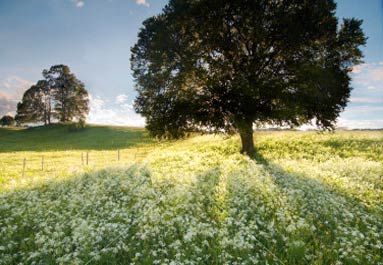Rural Real Estate Trends and Directions - Nine Predictions
1. Prices of almost all types of rural real estate will rise steadily in the foreseeable future. Rates of appreciation will vary, according to where the property is and what type of property it is. Appreciation rates will beat inflation and have less volatility than stocks. Four or five percent annual appreciation is a reasonable—and modest—forecast.
2. Impacts, both real and imagined, of global warming will encourage relocation from the coasts inland, particularly away from the Southeast U.S. and Gulf Coasts. Upper middle south and mountains will benefit,particularly non-coal-mining areas of Tennessee and Kentucky. Rural areas of colder states will benefit; hotter, drier states will become less attractive.
3. Residential property in rural communities that are losing population will not be good short-term and medium-term investments. Small towns in the mid-West and coal towns in southern West Virginia come to mind. These places can, however, offer good deals on farms and timberland.
4. Above-average appreciation will be seen on rural property around college/university towns. Look for property within a 30-minute drive of second- and third-rank institutions that are increasing their enrollments.
5. Land around inland water east of the Mississippi should be a good, long-term investment. I’m hesitant to endorse acreage on water in the dry areas of the West where chronic drought is going to force reallocation of water resources away from recreation.
6. The cost of constructing houses in the country will continue to be less than in urban areas owing to lower labor costs. But construction costs in both places will continue to rise at a rate higher than overall inflation. A buyer is likely to find a better deal in remodeling an existing house than in starting from scratch.
7. Farmland used for agricultural (as opposed to farmland that is converted to second homes) will appreciate less rapidly than other types of rural property. At some point, farmers cannot make a profit when land is priced beyond what their farming can pay for. More leasing and fewer sales will be seen as that point nears.
8. Hardwood timberland is likely to show above-average appreciation, a trend that’s been evident during the last decade. Hardwood stumpage prices cycle more or less with home construction trends, though the overall trend is up. Hardwood timberland prices have not softened during the lows of the stumpage price cycles. Such timberland can be used for other purposes and has proved to be a sound long-term investment for both individuals and institutions, like endowments and pension funds.
9. Water, as a resource, will take on ever increasing value as heat and aridness move from south to north and expand their influence in the West.
|









